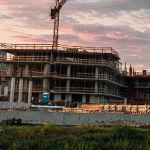Collaboration has become a buzzword in the construction industry, emphasizing the collective effort of various stakeholders to achieve common goals. The question arises: Does collaboration truly make a difference in construction project outcomes? Let’s delve into the intricacies of collaboration and its impact on the success of construction projects.
1. Enhanced Communication and Coordination
One of the primary benefits of collaboration in construction is improved communication. When architects, engineers, contractors, and other project participants collaborate effectively, information flows seamlessly. This enhances coordination, reduces errors, and ensures that everyone is on the same page throughout the project lifecycle.
2. Early Problem Identification and Resolution
Collaboration allows for early identification of potential issues. By fostering an environment where different perspectives are valued, project teams can foresee challenges and address them proactively. This early problem-solving approach prevents delays and costly revisions later in the construction process.
3. Optimized Project Planning and Design
When experts from different disciplines collaborate during the planning and design phases, the result is a more holistic and optimized project. Each stakeholder brings their unique insights, leading to innovative solutions, cost-effective designs, and efficient construction methodologies that might not have been possible in isolated workflows.
4. Efficient Resource Allocation
Collaboration enables better resource allocation. By having a comprehensive understanding of the project from various viewpoints, teams can allocate resources more efficiently. This includes manpower, equipment, and materials, ensuring that resources are utilized to their maximum potential without unnecessary redundancies.
5. Improved Risk Management
Construction projects inherently involve risks, but collaboration can significantly improve risk management. When different experts collaborate, they can collectively identify potential risks, assess their impact, and develop mitigation strategies. This proactive approach minimizes the likelihood of unexpected challenges derailing the project.
6. Accelerated Project Timelines
Effective collaboration often leads to streamlined workflows and accelerated project timelines. When every team member understands their role and how it contributes to the overall project, tasks are completed more efficiently. Reduced rework and improved decision-making contribute to faster project completion.
7. Stakeholder Satisfaction and Trust Building
Collaboration builds trust among project stakeholders. When clients, contractors, and designers work collaboratively, it fosters a sense of transparency and shared responsibility. This, in turn, leads to higher levels of stakeholder satisfaction, as everyone feels actively involved and invested in the project’s success.
Conclusion: The Collaborative Edge
In conclusion, collaboration undeniably improves construction project outcomes. The collaborative edge lies in efficient communication, early problem resolution, optimized planning, resource allocation, improved risk management, accelerated timelines, and enhanced stakeholder satisfaction. Embracing a collaborative mindset can be a game-changer, propelling construction projects toward success and excellence.


